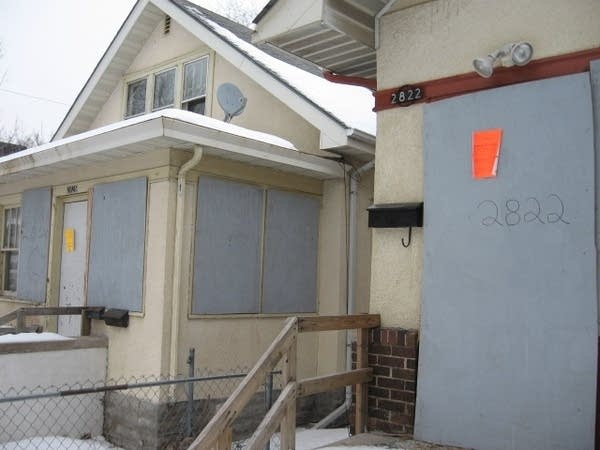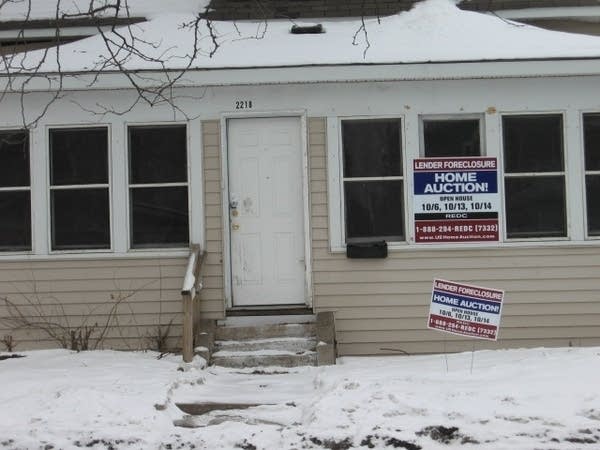Minneapolis foreclosures - has the peak passed?
Go Deeper.
Create an account or log in to save stories.
Like this?
Thanks for liking this story! We have added it to a list of your favorite stories.

For those looking for a break in the foreclosure crisis, the latest news isn't great.
There were more than 600 foreclosures in Hennepin County last month, 80 percent more than last April. The first four months of this year have brought 60 percent more foreclosures than the same period last year.
[image]
The majority of county sheriff sales are in Minneapolis -- and so far the majority of city's foreclosures have been in North Minneapolis.
Turn Up Your Support
MPR News helps you turn down the noise and build shared understanding. Turn up your support for this public resource and keep trusted journalism accessible to all.
But for the first time this year, north side foreclosures make up less than half of the total, and, the number went down; from 128 foreclosures in March to 120 in April.
According to Roberta Englund, executive director of the Webber-Camden Neighborhood Association in north Minneapolis, the answer is simple. "There's nothing much left to foreclose," she said.
The Webber-Camden neighborhood filed suit against a predatory investment group which bought up more than 140 homes. Most of those properties are in foreclosure and have been abandoned.
"There's nothing much left to foreclose."
Englund said the north side was hit first and hardest by foreclosures because north side homebuyers were most vulnerable to predators.
"They were easy targets for a lot of reasons and there was among our residents here, a tremendous need," Englund said. "So they were very susceptible to the kind of money that was available a year-and-a-half, even two years ago. So the process of foreclosure has already taken it's toll here."
University of Minnesota Law professor Prentiss Cox agrees with that assessment of how and why the foreclosure crisis hit the north side first.
He says it's likely that north side foreclosures either have or are close to bottoming out.
"What's driving this, is the terrible mortgage organization practices," Cox said. "The effects of those were felt fairly quickly because they were so bad, because we had loans that people had no ability to pay and so they defaulted fairly quickly."

Cox said the most predatory loans which originated several years ago are now a thing of the past. They created so many foreclosures the subprime mortgage industry has ended as well.
But future foreclosure numbers will be harder to predict because a lot depends on the mortgage products that are still out there. Cox said if the sinking economy brings further job losses and wage reductions, that will mean more of the same.
"Then we're in for continued, serious deterioration in mortgages and a rise in foreclosures," he said. "If those stabilize and get better, then I think we can work our way out of this in the not too distant future. It's all pretty much guesswork."
Cox said predicting the next wave of foreclosures will also be guesswork and that they likely won't fall into neat geographic patterns as they have in Minneapolis and St. Paul.
But the April figures may hint at some new hotspots. Suburban neighborhoods where people bought homes using nontraditional loans, may get caught up in the next wave of foreclosures. The numbers show foreclosures in communities like Brooklyn Park and Brooklyn Center are now on the rise.
A report from a non-profit group called HousingLink, shows at this rate more than 28,000 Minnesotans will lose their homes this year.



